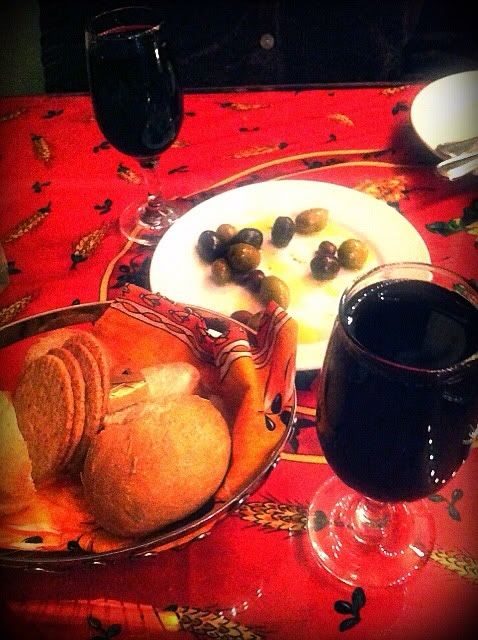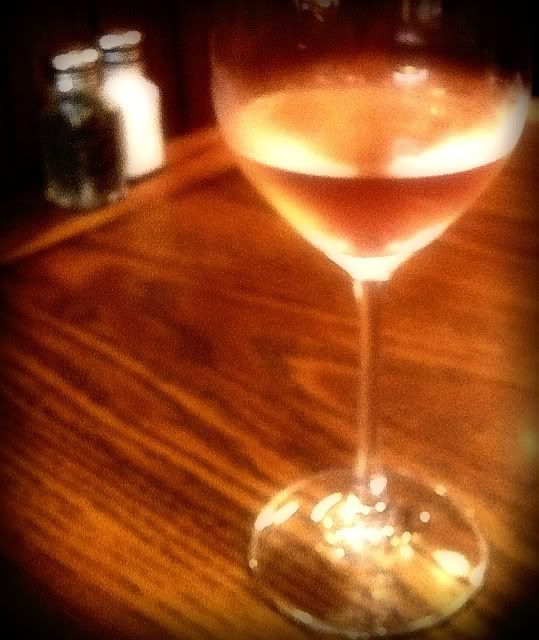In Washington, German and Italian immigrants get credit for introducing winegrowing and winemaking to the state in the 19th century. It was in the 1950s, however, that the volume really got turned up on the Washington wine industry. During that time, two wine companies began to experiment with
vitis vinifera grapes, and those two wineries eventually merged and became Chateau Ste. Michelle.
Bob Betz, of
Betz Family Wines, tells me that Ste. Michelle, along with Columbia Winery, continued planting
vinifera vines in the 1960s. Today the state is the second largest wine producer in the nation.
If you think of Washington as a wet, damp place because of the notoriety of Seattle’s rainy weather, you’re only half right. The eastern half of the state, across the Cascade Mountains, provides semi-desert conditions in which most of the state’s grape-growing is done. The mountains form a “rain-shade” that keeps the ocean-influenced weather to the west. Betz draws his grapes from that semi-arid eastern half of the state, but his winery is over on the rainy side of the Cascade Mountains, in Redmond.
Washington is dominated by the Columbia Valley AVA. According to
Washington Wine, the region’s 11-million acres takes up one-third of the state’s land and contains 99-percent of the wine grapes grown in Washington. Columbia Valley contains the smaller appellations of Red Mountain, Yakima and Walla Walla Valleys, Wahluke Slope, Rattlesnake Hills, Horse Heaven Hills, Snipes Mountain, and Lake Chelan.
Wines from Washington state have been turning up on Wine Spectator’s best-of-the-year lists since 1989.
Much has been written about Washington’s lack of a wine identity, the lack of a single grape variety they can point to as “theirs,” the way Napa does with Cabernet Sauvignon and Oregon with Pinot Noir. In my
interview with Bob Betz, I asked him if he thought there was one grape Washington should claim as their own. He said he likes the notion of Washington as a diverse landscape, like California, where different regions can hang their hats on different vines.
I asked my pals on Twitter to guide me to something definitive in a Washington wine, and
Michael Mettler (@MettD) pointed me toward Washington Syrah. As luck would have it, Betz is a self-professed "Rhone nut." He makes three dynamite Syrahs that bring that French valley to mind in clearer focus than most California Syrahs do. In fact, I’d say the Betz Syrahs come very close to replicating the style of the real McCoy.
La Côte Rousse 2010
Syrah, Red Mountain AVA, 14.4% abv
This wine is made from four different clones of Syrah - 174, 383, 99 and Phelps - all grown close together in the Red Mountain AVA, from Ciel du Cheval Vineyard and the Ranch at the End of the Road. Betz says “Syrah is the grape variety that challenges my belief that “site trumps clone. The wine is inky dark in the glass with big, black fruit on the nose and a layer of dusty minerality atop it. The palate displays blackberry and tar, with a nice tannic grip. This warm-climate Syrah should pair nicely with any type of meat or mushroom dish. The earthiness will match up delightfully with lamb or Merguez sausage. It tastes very Rhone-like.
La Côte Patriarche 2010
Syrah, Yakima Valley AVA, Red Willow Vineyard, 14.4% abv
Betz says the Red Willow Vineyard has the oldest Syrah planted in Washington - 25 year-old vines. This Syrah is also very dark, with an extremely aromatic nose full of dark aromas. Immediately, the smoke of a campfire leaps from the glass, followed by meat and anise. With all that, the fruit seems almost an afterthought. The blackberry aromas are luscious, if somewhat shrouded by the rest of the show. On the palate, the blackberry isn't shy, but there is plenty of minerality, bacon fat, licorice and black pepper to go around.
La Serenne 2010
Syrah, Yakima Valley AVA , Boushey Vineyard, 14.4% abv
This is the fruitiest of the three Syrahs. Medium dark purple in the glass, its nose shows blackberries and oak spice right up front. The wine has a medium mouthfeel, with well-defined tannins and dark fruit leading the flavors. Shades of the oak show up, but it is, at first sip, a youthful, fruit-forward wine. After opening, hints of smoke, earth and minerals come forth, but the fruit is the show here. It’s not sweet, but in comparison to the other two, it almost seems so.
Bésoleil 2010
65% Grenache, 18% Mourvèdre, 11% Cinsaut, 6% Syrah, Columbia Valley, 14.6% abv
Modeled after the wines of Châteauneuf du Pape, Bèsoleil offers a Southern Rhône bouquet and palate that are laden with blackberry and raspberry. Notes of pepper and a floral aspect accent the fruit, while the structure is firm but the tannins don’t hinder the sipping experience. It was a cool vintage in the AVAs where the grapes were sourced - Yakima Valley, Snipes Mountain and Red Mountain. Betz says the complexity should increase through 2018. It’s great with goat cheese or chicken.
Betz also does nice things with Bordeaux varieties.
Clos de Betz 2010
Columbia Valley Red Wine, 14.6% abv
This cool vintage Bordeaux blend of 58% Merlot, 35% Cabernet Sauvignon and 7% Petit Verdot comes from the grapes of three Columbia Valley AVAs - Red Mountain, Yakima Valley and Horse Heaven Hills. Betz is understandably proud of the bouquet. He says, "The aroma takes center stage, with pure, vibrant black cherries, camphor, cocoa and a slight kirsch essence. Its foundation is a classic, complex expression of Washington Merlot, but since 40% of the blend is made from Petite Verdot and Cabernet Sauvignon, the aroma takes on additional dimension of anise, rose petal and baking spice." It is, to say the least, an extremely expressive nose. On the palate, things get just as busy. Blackberry, black cherry and a bold streak of eucalyptus and pencil point all run through this wine, helped along by vigorous acidity and firm tannins. The sip finishes savory with baker's chocolate and licorice.
Père de Famille Cabernet Sauvignon 2009
Columbia Valley, 14.6% abv
This Cabernet is blended with 8% Merlot and 6% Petit Verdot. It's a medium dark garnet color in the glass, and it throws off dark red fruit aromas with notes of cedar and clove. The spices seem to become a little more complex with time. The mouthfeel is full and aggressive, with firm tannins and bracing acidity. Cassis leads the flavor profile, with hints of eucalyptus and earth emerging during the sip. It's lean, not lush, and it packs some pretty good power - it's brawny, but in an elegant way.
Follow Randy Fuller on Twitter














